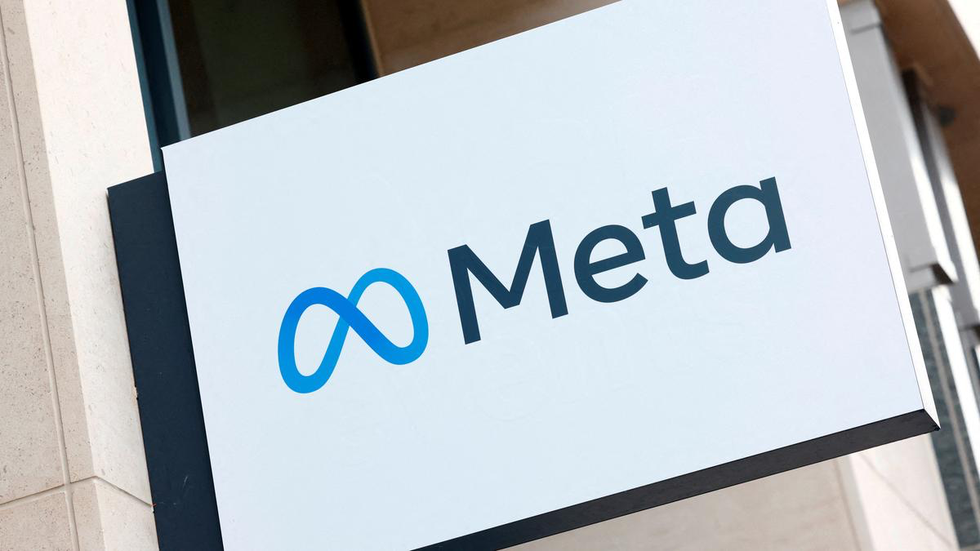
About Llama 3.2:
- It is an open-source large language model developed by Meta.
- Features
- It has both image and text processing abilities.
- It includes voice interaction features, allowing users to engage in conversations with the AI using voice commands.
- This model includes both small and medium-sized variants at 11-billion and 90-billion parameters as well as more lightweight text-only models at 1-billion and 3-billion parameters that fit into select mobile and edge devices.
- Out of the different Llama 3.2 variants, the 11-billion parameter one and the 90-billion parameter one are vision models and can understand charts and graphs, caption images and locate objects from natural language prompts.
- The bigger model can also pinpoint details from images to create captions.
- Applications: The models will help developers create more advanced AI applications like AR apps with a real-time understanding of video, visual search engines that distribute images based on content, or document analysis tools that can summarise large portions of text.
2. GlobE Network

About GlobE Network:
- The Global Operational Network of Anti-Corruption Law Enforcement Authorities (GloBE Network) was an initiative of G-20.
- The GloBE Network was officially launched on June 3, 2021, during a special event at the UN General Assembly Special Session against Corruption.
- It now has 121 member countries and 219 member authorities.
- It is emerging as a unique platform where agencies from across the world share best practices and criminal intelligence, develop strategies, and support in the common cause of combating corruption.
- The steering committee, consisting of one chair, one vice-chair, and 13 members, provides leadership and direction for the organisation.
- India’s Central Bureau of Investigation (CBI) and Enforcement Directorate (ED) are part of the network, with the Union Ministry of Home Affairs (MHA) acting as the central authority for India.
- The Network is governed by its members and is supported by the United Nations Office against Drugs and Crime (UNODC) which provides the Network’s secretariat.
- During India’s G-20 Presidency in 2023, two high-level principles for combating corruption were adopted which detailed leveraging of the GloBE Network.
3. Monocled Cobra
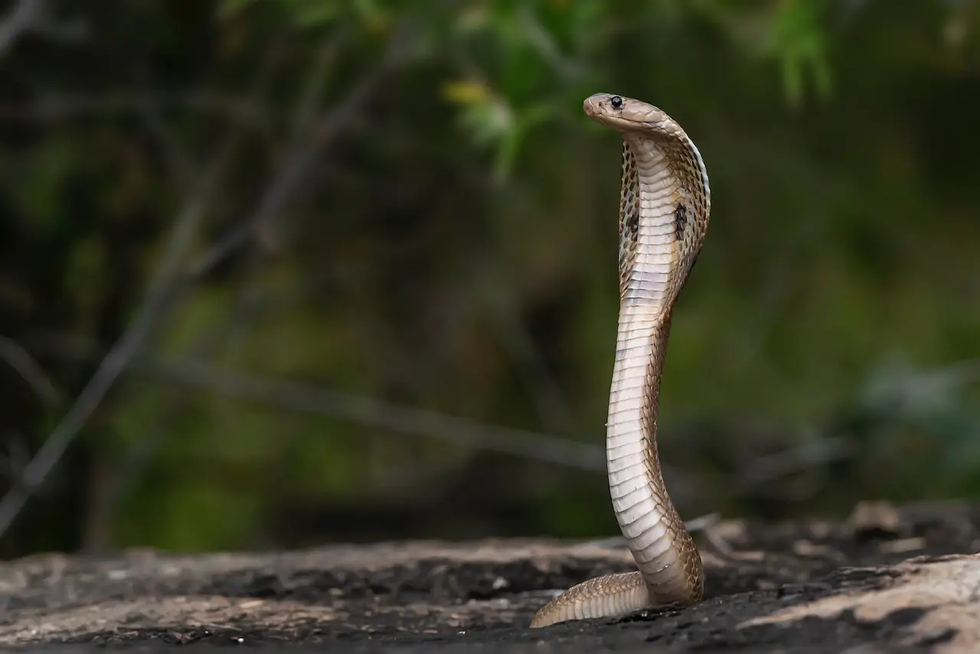
About Monocled Cobra:
- It is a venomous cobra species widespread across South and Southeast Asia.
- Some populations of the Monocled cobra have the ability to spit venom, earning them the name "Indian spitting cobra".
- They have an O-shaped, or monocellate hood pattern, which has the "spectacle" pattern on the rear of their hood.
- Habitat:
- It prefers habitats associated with water, such as paddy fields, swamps, and mangroves, but can also be found in grasslands, shrublands, and forests.
- It is also found in agricultural land and human settlements including cities.
- Distribution: It inhabits eastern and northeastern India, Nepal, Bangladesh, Myanmar, Thailand, Vietnam, Malaysia, and southern China.
- Ecological significance: They play an important role in their ecosystem. They help to maintain the balance of prey species and control agricultural pests such as rats and mice.
- Conservation status
- IUCN Red List: Least Concern (LC)
4. PARAM Rudra Supercomputers

About PARAM Rudra Supercomputer:
- It is designed to tackle complex computational challenges across various scientific and engineering domains.
- Three Param Rudra supercomputers have been developed indigenously under the National Supercomputing Mission.
- They have been deployed at three key locations: Delhi, Pune and Kolkata.
- In Pune, the Giant Metre Radio Telescope (GMRT) will leverage the supercomputer to explore Fast Radio Bursts (FRBs) and other astronomical phenomena.
- In Delhi, Inter University Accelerator Centre (IUAC) will enhance research in fields like material science and atomic physics.
- In Kolkata, S N Bose Centre will use supercomputing technology to drive advanced research in areas such as physics, cosmology, and earth sciences.
What is a High-Performance Computing (HPC) system?
- It is tailored for weather and climate research.
- It is located at two key sites, the Indian Institute of Tropical Meteorology (IITM) in Pune and the National Center for Medium Range Weather Forecast (NCMRWF) in Noida, this HPC system has extraordinary computing power.
- The new HPC systems are named 'Arka' and 'Arunika,' reflecting their connection to the Sun.
- Significance: These high-resolution models will significantly enhance the accuracy and lead time of predictions related to tropical cyclones, heavy precipitation, thunderstorms, hailstorms, heat waves, droughts, and other critical weather phenomena.
Key facts about the National Supercomputing Mission
- It was launched in 2015 to provide the country with supercomputing infrastructure to meet the increasing computational demands of academia, researchers, MSMEs, and startups.
- It aims to create a network of advanced computing systems across India.
- It is a collaboration between the Ministry of Electronics and Information Technology (MeitY) and the Department of Science and Technology (DST).
It is implemented by the Centre for Development of Advanced Computing (C-DAC), Pune and the Indian Institute of Science (IISc), Bengaluru.
5. Central Silk Board
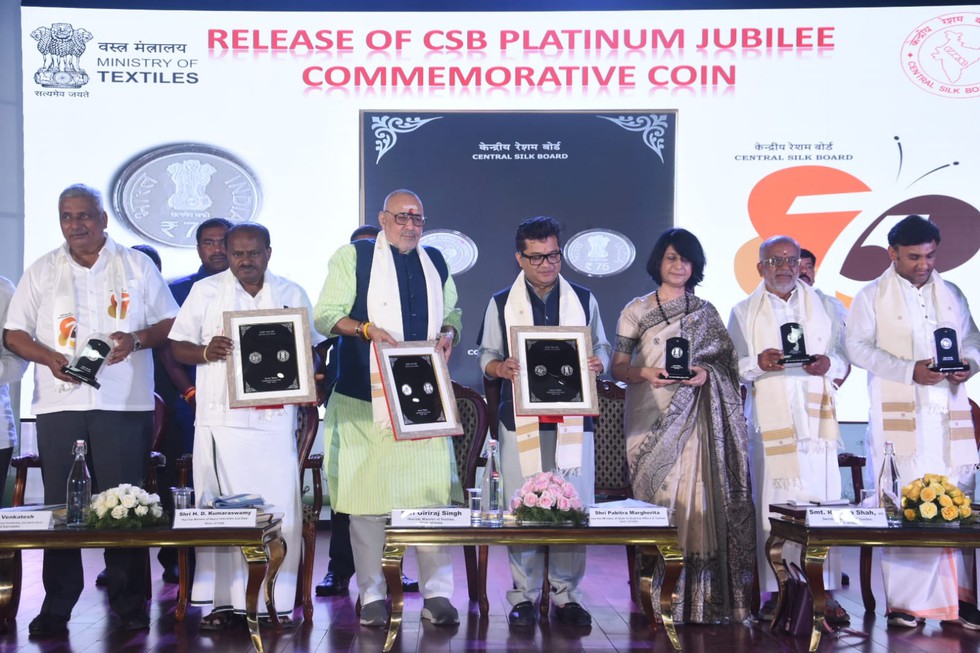
About Central Silk Board
- It is a Statutory Body established in 1948, by an Act of Parliament.
- It functions under the administrative control of the Union Ministry of Textiles, Government of India.
- It comprises 39 members appointed as per the powers and provisions conferred by Sub-Section 3 of Section 4 of the CSB Act 1948, for a period of 3 years.
- The Chairperson of the Board to be appointed by the Central Government.
- Functions
- It advises the Central Government on all matters relating to production, supply, distribution, trade and commerce in silk-worm seed, the development of the silk industry and its products including export and import.
- It has established 6 Regional Offices at New Delhi, Mumbai, Kolkata, Hyderabad, Bhubaneshwar and Guwahati.
- Headquarters: Bengaluru
Silk Production in India
- India has the unique distinction of being the only country producing all the five known commercial silks, namely, mulberry, tropical tasar, oak tasar, eri and muga.
- India is the second largest producer of silk in the world.
6. Who are Mao Nagas?
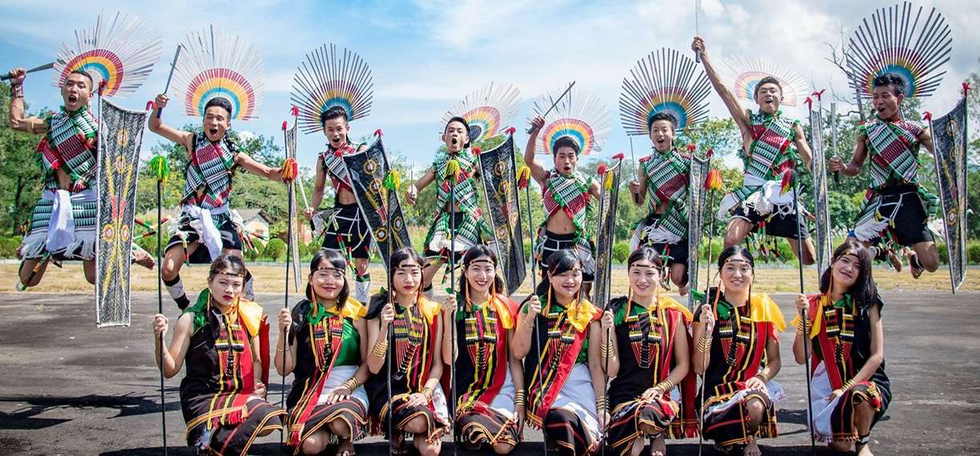
About Mao Nagas:
- Mao Naga is one of the indigenous tribes of Northeast India.
- It is one of the Naga tribes in Manipur.
- Language: Their language is called Mao, and also the whole land area inhabited by them is also called Mao.
- The Mao Nagas call themselves Ememei or Memei in their language.
- Mao is geographically situated in the northern part of Manipur, adjoining the southern part of Nagaland.
- According to the 2011 provisional census, Mao has a population of 97,195.
- The Mao Nagas live in a compact and well-protected village usually situated in the hilltop and mountain ridges.
- Their society follows a patriarchal system where descent is traced through the male lineage.
- Like any other Naga community, the Mao Naga is divided into different clans (Opfuta), which are further divided into sub-clans.
- Economy:
- The economy of the Mao Nagas is predominantly agrarian, and rice is their staple food.
- Terraced rice cultivation (both dry and wet) is a customary practice that Mao people have been engaged in through generations.
- They emphasized cooperative and collective endeavors and believed in the system of distribution in the form of a barter system or mutual exchange.
- Religion:
- Before the advent of Christianity, the Mao Naga had their traditional religion known as ‘Opfupe Chüna-Chüno’ (religion of the forefather).
- They believe in the existence of a Supreme being called ‘Iyi Koki Chüku Kapi Oramei’ (a benevolent God who protects and nurtures man).
- Today, the majority of the Mao Nagas have embraced Christianity.
Festivals: There are four main festivals celebrated by the Mao Nagas. They are Chüthuni, Chüjüni, Saleni, and Onuni.
7. Great Sandy Desert
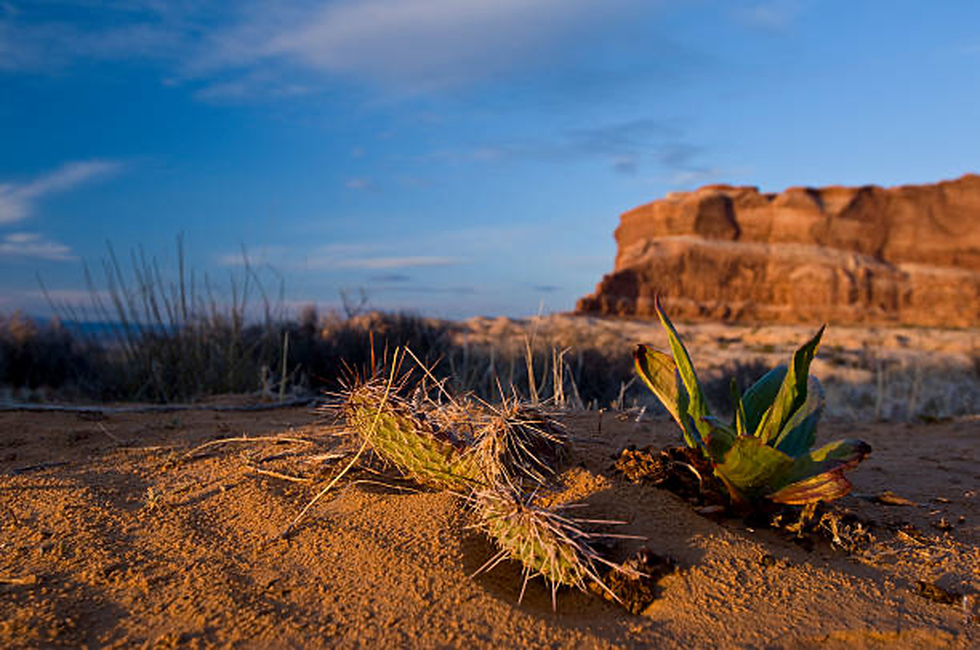
About Great Sandy Desert:
- It is an arid wasteland of northern Western Australia.
- It is Australia’s second largest desert, after the Great Victoria Desert, and encompasses an area of 284,993 sq.km.
- It extends from Eighty Mile Beach on the Indian Ocean eastward into the Northern Territory and from Kimberley Downs southward to the Tropic of Capricorn and the Gibson Desert.
- It is typified by longitudinal sand ridges, chains of large salt lakes, and occasional low rocky hills interlaced with Triodia (Spinifex) grass.
- The Gibson Desert lies to the south, and the Tanami Desert lies to the east of the Great Sandy Desert.
- Climate: It experiences exceptionally high daytime temperatures and overnight temperatures, along with far below average humidity levels.
- The region is not very populated. The main population is made up of Indigenous Australians. There are two main tribes; Martu in the west and Pintupi to the east.
8. East Rajasthan Canal Project (ERCP)
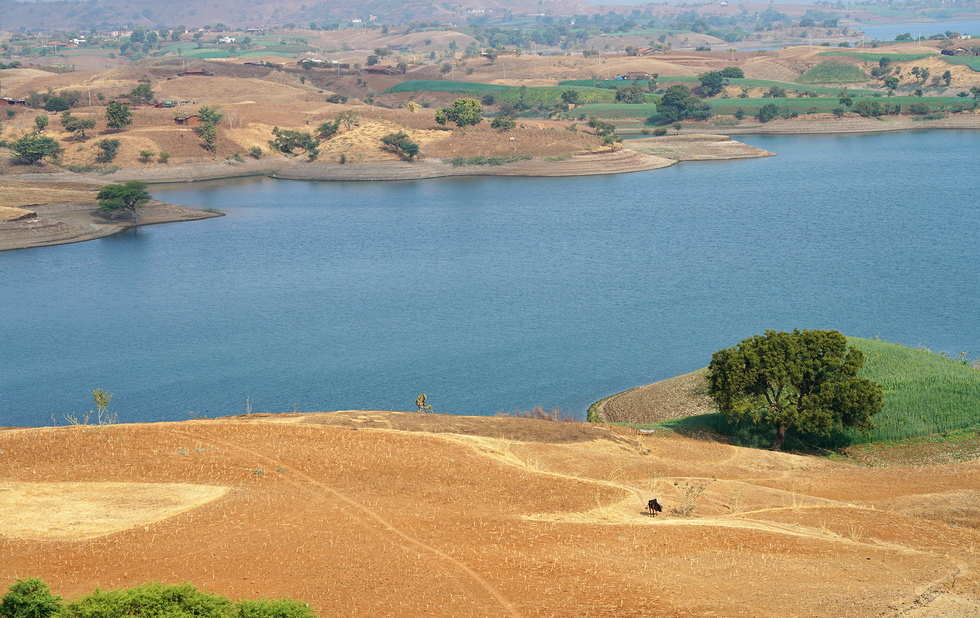
About East Rajasthan Canal Project (ERCP):
- It is an ambitious project of Rajasthan State to harvest the excess water present in the rivers, especially in southern Rajasthan, and use that water for drinking and irrigation purposes in south-eastern Rajasthan, where there is scarcity.
- It envisages intra-basin transfer of water within the Chambal Basin by utilising surplus monsoon water available in Kalisindh, Parvati, Mej, and Chakan sub-basins and diverting it into water deficit sub-basins of Banas, Gambhiri, Banganga, and Parbati to provide drinking and industrial water to 13 districts of eastern Rajasthan.
- The project also envisages irrigation in about 2.82 lakh hectare area.
- The project will also supply water to the Delhi-Mumbai Industrial Corridor and take care of the flood and drought situation in the area.
Key Facts about Chambal River:
- It is a tributary of the Yamuna River in central India and thus forms part of the greater Gangetic drainage system.
- Course:
- Origin: It originates at the Singar Chouri peak on the northern slopes of the Vindhya mountains.
- The river flows north-northeast through Madhya Pradesh, running for a time through Rajasthan, then forms the boundary between Rajasthan and Madhya Pradesh before turning southeast to join the Yamuna in Uttar Pradesh.
- The basin is bounded by the Vindhyan mountain ranges and the Aravallis.
- The Hadauti plateau in Rajasthan occurs in the upper catchment of the Chambal River to the southeast of the Mewar Plains.
- It is one of the most pollution-free rivers in India.
- Tributaries: Banas, Kali Sindh, Sipra, Parbati, etc.
- Major Dams on the River: Gandhi Sagar Dam, Rana Pratap Sagar Dam, Jawahar Sagar Dam.
- The National Chambal Sanctuary is situated along the river Chambal on the tri-junction of Rajasthan, Madhya Pradesh, and Uttar Pradesh.
9. What is a Spiral Galaxy?

About Spiral Galaxy:
- Spiral galaxies are twisted collections of stars and gas that often have beautiful shapes and are made up of hot, young stars.
- In a spiral galaxy, the stars, gas, and dust are gathered in spiral arms that spread outward from the galaxy's center.
- Most of the galaxies that scientists have discovered so far are spiral galaxies, as opposed to the other two main categories of galaxy shapes—elliptical and irregular.
- Approximately 60% of all galaxies are thought to be spiral galaxies.
- The Milky Way, the galaxy that includes Earth and our solar system, is an example of a spiral galaxy.
- Structure:
- Most spiral galaxies contain a central bulge surrounded by a flat, rotating disk of stars.
- The bulge in the center is made up of older, dimmer stars and is thought to contain a supermassive black hole.
- Approximately two-thirds of spiral galaxies also contain a bar structure through their center, as does the Milky Way.
- The disk of stars orbiting the bulge separates into arms that circle the galaxy.
- These spiral arms contain a wealth of gas and dust and younger stars that shine brightly before their quick demise.
- The majority of spiral galaxies rotate in the sense that the arms trail the direction of the spin.
- The visible portion of spiral galaxies contains only a small fraction of the total mass of the galaxy, and that spiral galaxies are surrounded by an extensive halo consisting mostly of dark matter.
- Spiral galaxies are thought to evolve into elliptical galaxies as the spirals get older.
10. What is the Jivitputrika Festival?
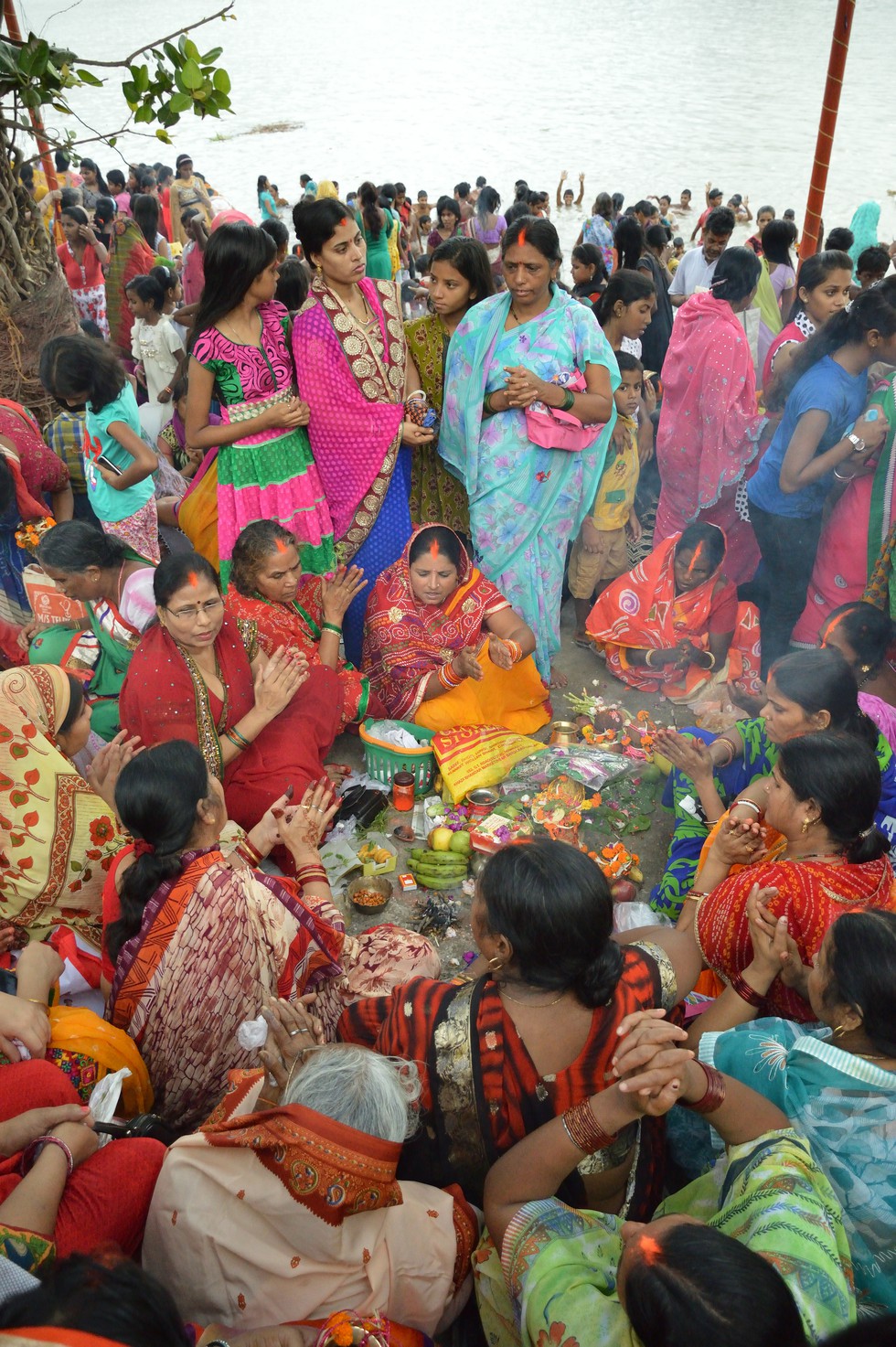
About Jivitputrika Festival:
- Jivitputrika, or Jitiya Vrat, is a Hindu festival observed primarily in the northern and eastern parts of India, including Bihar, Uttar Pradesh, Jharkhand, and Nepal.
- It is celebrated by mothers who fast for the well-being, long life, and prosperity of their children.
- The festival spans three days, with the main ritual involving a strict ‘nirjala’ fast, meaning no water is consumed during the fast.
- The fast is considered an expression of a mother's devotion and love, with the belief that it will bring divine blessings upon her children.
- The festival is rooted in Hindu mythology, particularly the story of King Jimutavahana, whose sacrifice for the welfare of others is commemorated during this time.
- The celebration begins with Nahai-Khai, where mothers take a purifying bath and eat a nourishing meal.
- The second day is marked by the rigorous fasting ritual, and the festival concludes on the third day with Paaran, where the fast is broken with a meal.


























































































































































.png)
.png)
.png)
.png)
.png)


.png)
.png)
.png)





.png)
.png)






.png)
.png)
.png)
.png)
.png)
.png)
.png)
.png)
.png)

.png)







.png)
.png)


.png)
.png)
.png)


.png)

.png)
.png)





.jpg)

.png)
.png)


.png)

.png)
.png)
.png)

.jpg)

.jpg)


.png)

.png)
.png)
.png)
.png)
.png)
.png)
.png)
.png)
.png)
.png)




.png)

.png)





.png)
.png)
.png)
.png)
.png)
.png)
.png)
.png)
.png)
.png)
.jpg)
.jpg)

.png)
.png)
.png)
.png)
.png)
.png)
.png)
.png)
.png)
.png)
.png)
.png)
.png)
.png)
.png)
.png)
.png)
.png)
.png)
.png)
.png)
.png)



.png)
.png)

.jpg)
.jpg)


.jpg)
.jpg)
.jpg)
.jpg)
.jpg)

.jpg)








.jpg)
.jpg)
.jpg)
.jpg)
.jpg)

















.jpg)
.jpg)







.jpg)


















.jpg)
.jpg)






























































































.jpg)
.jpg)


























.jpg)

.jpg)










.jpg)








.jpg)




.jpg)










.jpg)


















.jpg)












































.jpg)














.jpg)
.jpg)
.jpg)





.jpg)

.jpg)
.jpg)





































































.jpg)


































.jpg)
.jpg)
















































.jpg)












.jpg)


.jpg)




.jpg)
.jpg)
.jpg)

.jpg)
.jpg)
.jpg)
.jpg)

.jpg)
.jpg)
.jpg)

.jpg)
.jpg)
.jpg)
.jpg)
.jpg)
.jpg)
.jpg)
.jpg)

.jpg)


.jpg)
.jpg)
.jpg)
.jpg)
.jpg)
.jpg)
.jpg)
.jpg)
.jpg)
.jpg)











.jpg)
.jpg)





.jpg)
.jpg)
.jpg)
























.jpg)
























.jpg)









.jpg)
.jpg)







.jpg)
.jpg)









































.jpg)
.jpg)
.jpg)
.jpg)
.jpg)

.jpg)
.jpg)
.jpg)
.jpg)
.jpg)


.jpg)
.jpg)
.jpg)
.jpg)
.jpg)

.jpg)
.jpg)
.jpg)
.jpg)
.jpg)
.jpg)
.jpg)
.jpg)
.jpg)
.jpg)
.png)

.png)
.png)

.png)
.png)
.png)
.png)


.jpg)
.jpg)

.jpg)
.jpg)
.jpg)

.png)
.png)
.png)
.png)
.png)
.png)
.png)

.png)
.png)
.png)
.png)
.png)
.png)
.png)
.png)
.png)
.png)





































































-min.png)



.png)




.png)








































